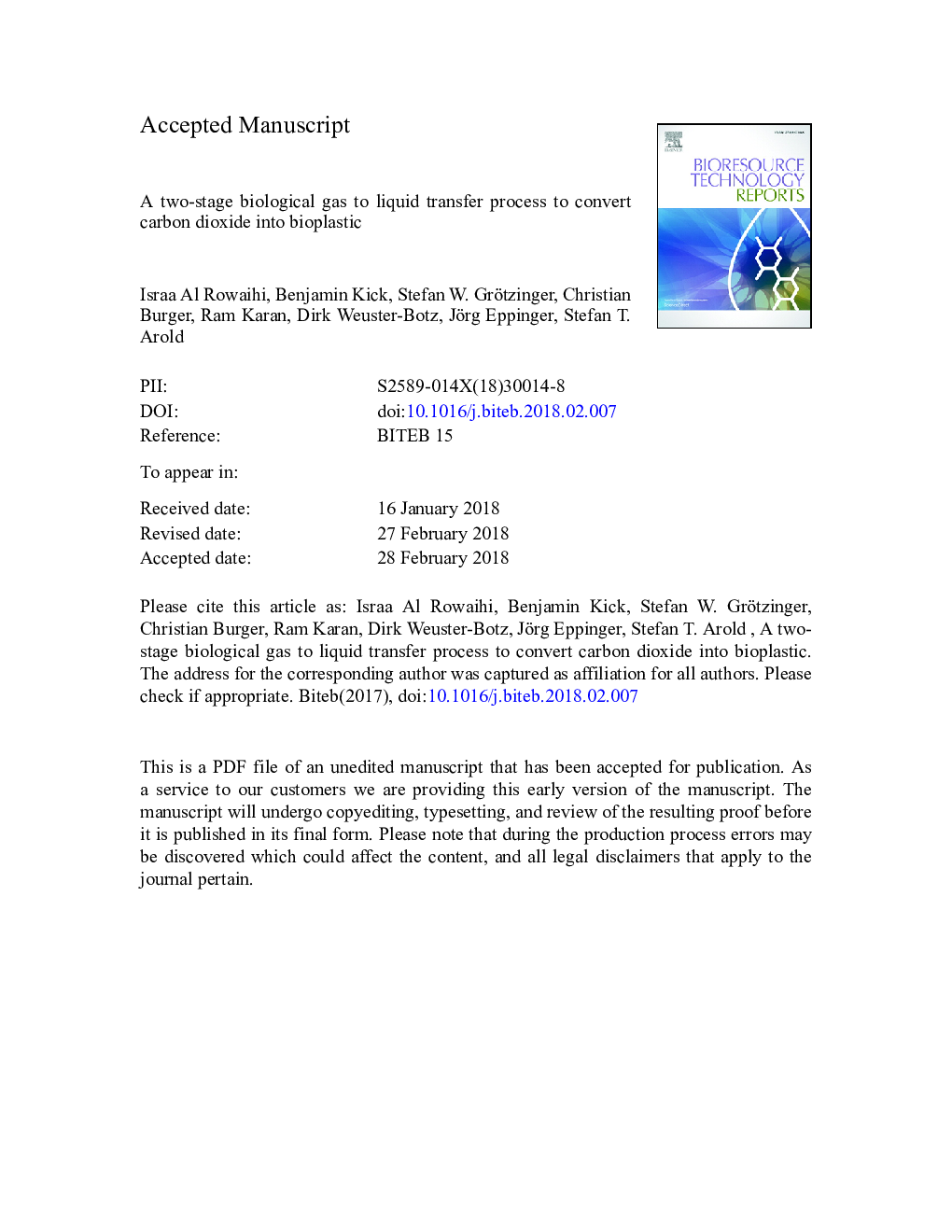| Article ID | Journal | Published Year | Pages | File Type |
|---|---|---|---|---|
| 6482564 | Bioresource Technology Reports | 2018 | 32 Pages |
Abstract
The fermentation of carbon dioxide (CO2) with hydrogen (H2) uses available low-cost gases to synthesis acetic acid. Here, we present a two-stage biological process that allows the gas to liquid transfer (Bio-GTL) of CO2 into the biopolymer polyhydroxybutyrate (PHB). Using the same medium in both stages, first, acetic acid is produced (3.2 g Lâ1) by Acetobacterium woodii from 5.2 L gas-mixture of CO2:H2 (15:85 v/v) under elevated pressure (â¥2.0 bar) to increase H2-solubility in water. Second, acetic acid is converted to PHB (3 g Lâ1 acetate into 0.5 g Lâ1 PHB) by Ralstonia eutropha H16. The efficiencies and space-time yields were evaluated, and our data show the conversion of CO2 into PHB with a 33.3% microbial cell content (percentage of the ratio of PHB concentration to cell concentration) after 217 h. Collectively, our results provide a resourceful platform for future optimization and commercialization of a Bio-GTL for PHB production.
Related Topics
Physical Sciences and Engineering
Chemical Engineering
Bioengineering
Authors
Israa S. Al Rowaihi, Benjamin Kick, Stefan W. Grötzinger, Christian Burger, Ram Karan, Dirk Weuster-Botz, Jörg Eppinger, Stefan T. Arold,
